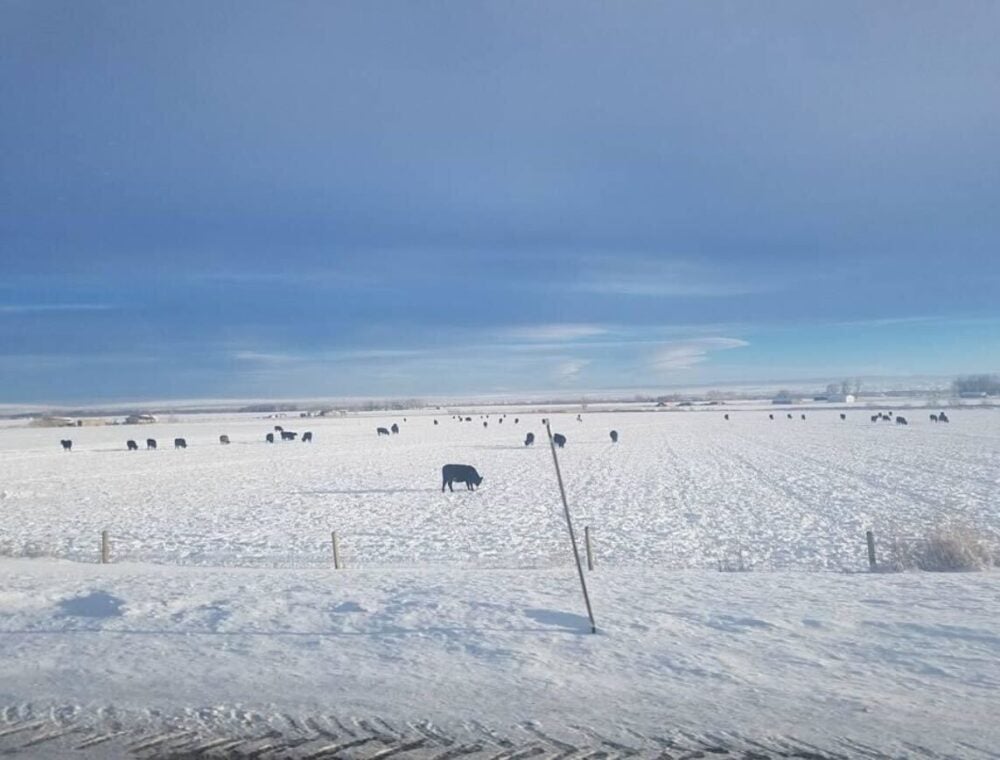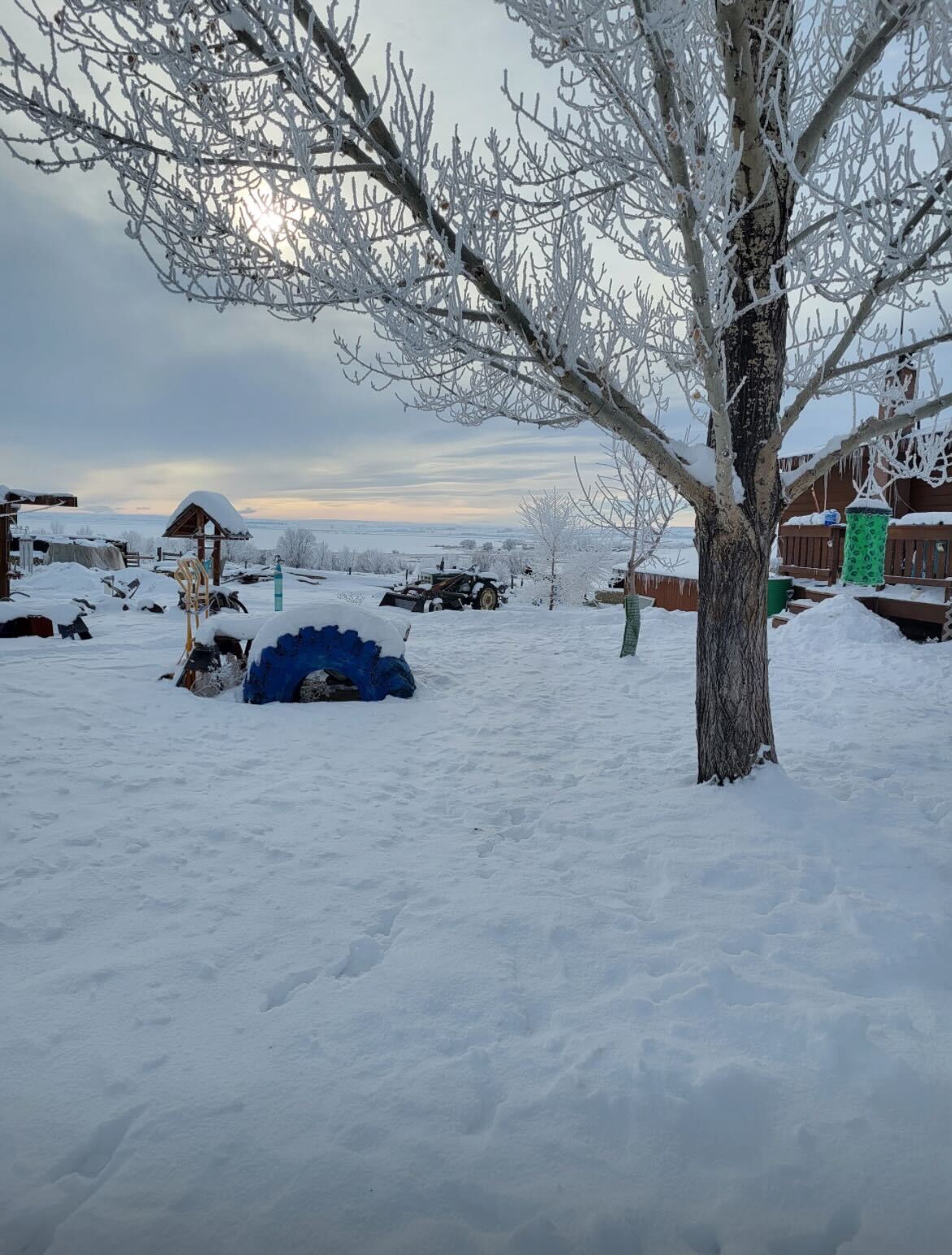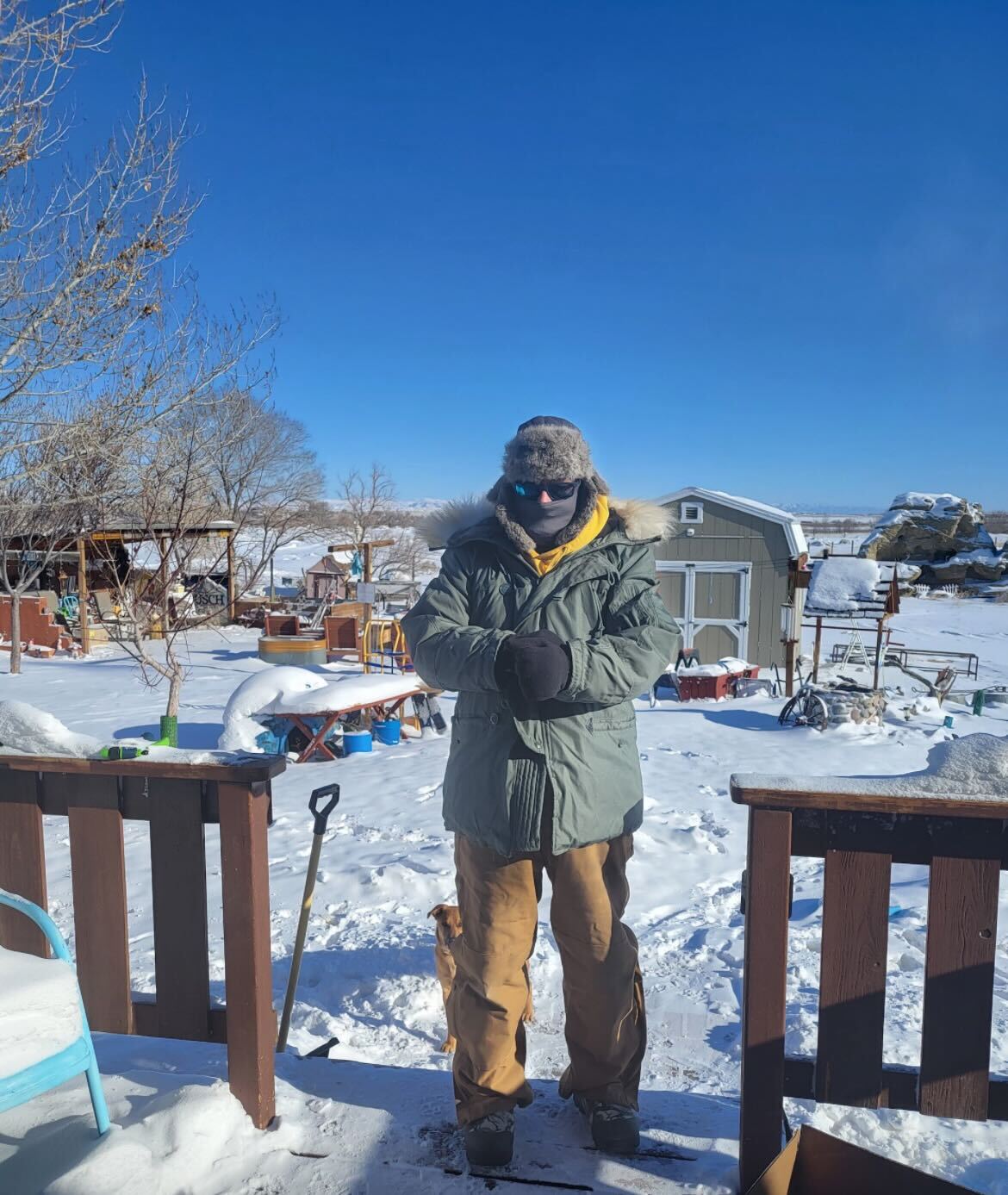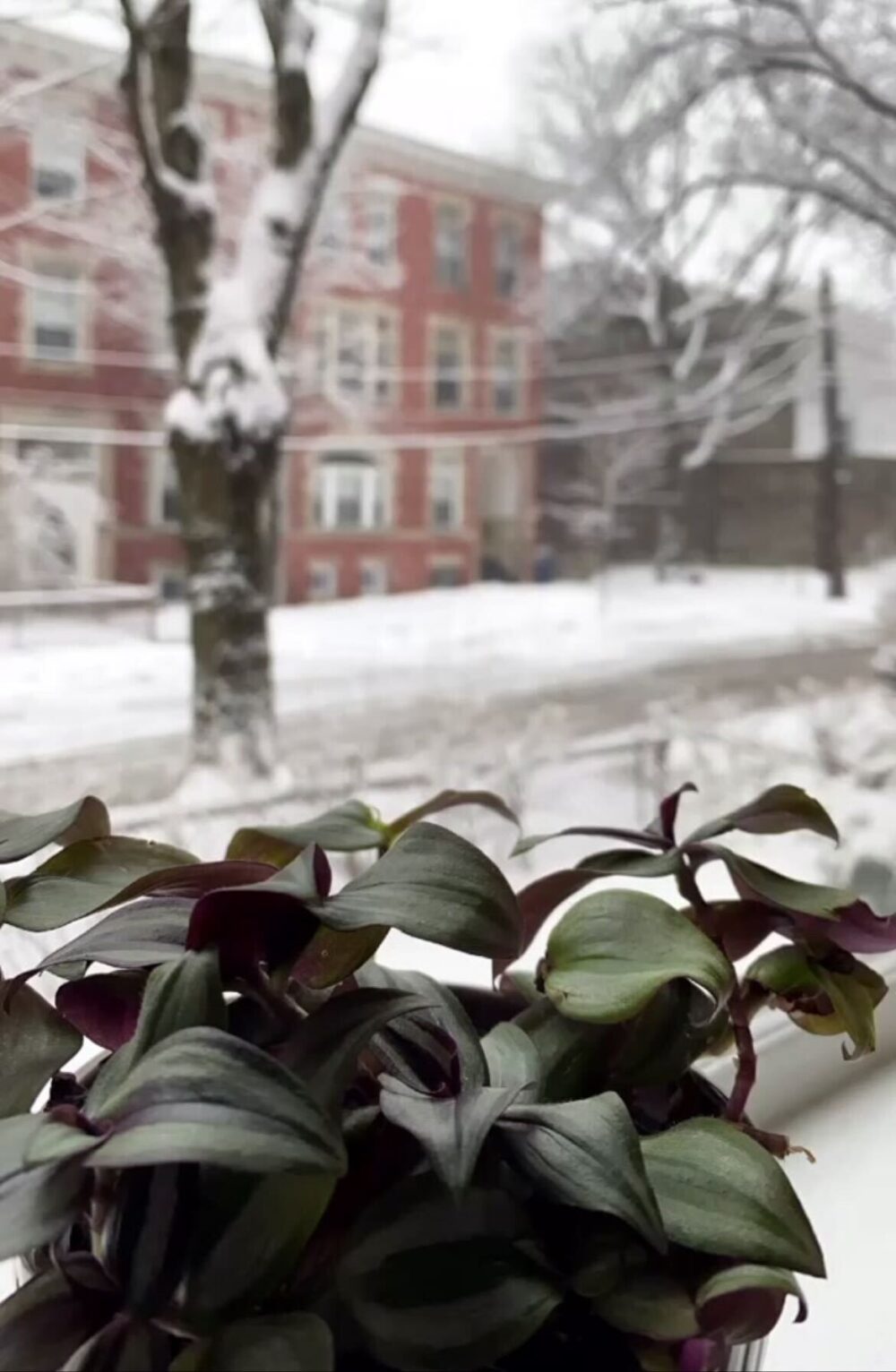
rural winter, city winter by Nicole Cooper
haven't shoveled snow here once

Field of Cows!
Winter in Wyoming—a symphony of snowflakes and ice over barren land sprinkled with old red barns and cattle. It’s a season of rugged beauty, where Carhartts are more a necessity than a fashion statement, and the sharp crack of ice breaking in the horse trough signals the start of another day. Winter in Wyoming is its own beast, a stark contrast to the cozy warmth and twinkling lights of Boston’s snow-covered brick and cobblestone.

Frozen Backyard
The farm during the winter isn’t just about picturesque scenes of snow and charming moments by the fire. It’s about resilience in the face of nature’s fury. Tractors plowing through towering snow drifts, feeding animals in sub-zero temperatures, and backcountry roads becoming treacherous trails.
And then there are tender, yet difficult moments, like calving season, when the bitter cold of twenty-below temperatures seeps into your bones. I can still recall the breath of the cows and horses, illuminated by the soft glow of the moon, bringing newborn calves inside the house to keep them alive. The swish of our overalls as we moved with purpose, the scent of hay mingling with the aroma of wood smoke.
Winter meant my dad starting the cars 20 minutes early before we all piled in for school. It meant the roosters staying put in their coop past their usual morning calls to stay warm. These months seemed to drag on. Living so far from friends meant that my siblings were my main source of company so we braved the elements together often with sleds in tow for a little fun in between hours spent chopping wood to help heat our home. Coming back inside, we’d strip off layer after layer of snow gear, feeling like we’d had a workout just getting undressed. Then there was the sweet relief of the wood stove, where we’d hang our soggy snow pants to dry, grateful for the warmth on our rosy red cheeks.

Cold Dad at 40 below
Now that I am at MIT, I have found that winter in Boston may be the same season, but it has a different flavor. Instead of the vast expanse of Wyoming wilderness, I find myself navigating the narrow streets and bustling cafes of the city. The familiar rituals of rural life gave way to a more refined existence, where a steaming latte replaced Grandma’s cocoa and a long navy peacoat adorned my shoulders in place of mismatched gloves and brightly colored snow pants or Carhartts covered in stains earned through hard work.
It’s a funny thing, how something as fundamental as winter can differ so drastically between rural America and city life. I have found myself confronted with a different winter from the one that I know. Winter in Boston is more like short punctuated treks into the cold from my home to the T Stop, from the T Stop, to a cafe, and from the cafe to work. It is no longer about survival, it is more about experiencing the beauty of the season.
Although, amidst the hustle and bustle of city life, I can’t help but long for the days back home—even the challenging ones. There’s a certain magic in the solitude of rural winters, a sense of camaraderie forged in the face of adversity. I’ve learned to embrace the differences and find joy in the unique experiences that each season brings, whether it’s the quiet solitude of a snowy Wyoming landscape or the vibrant energy of brownstones against the slush of a Nor’easter.

Wintery Boston Street
As I work with rural and small-town students at MIT, I’m reminded of the myriad ways in which transitioning to a prestigious institution like ours can shape their experiences. I’m also reminded of the many small cultural shifts that can make applying to an institution like MIT from a place like Wyoming all the more daunting; while the academic opportunities and resources are undoubtedly vast, it’s the subtler shifts—like trading your morning walk to the barn for a crowded hustle to the Kendall Square T stop—that also play a significant role in their higher education journey.
By recognizing and embracing these seemingly small but impactful differences, we can make MIT feel like home for everyone, no matter where they come from. I find myself drawing on the lessons of my farm life not only to inform how we create welcoming spaces, but also to help me get through the New England winter: by embracing the coziness during the cold months, while sending warm thoughts to the calves being born in twenty-below temperatures back home.